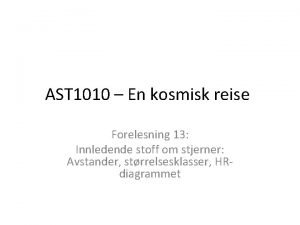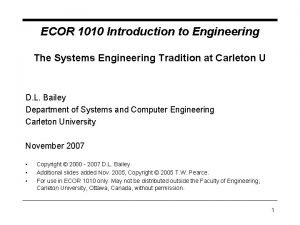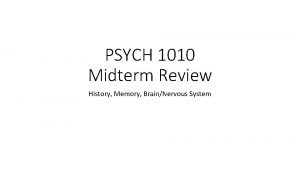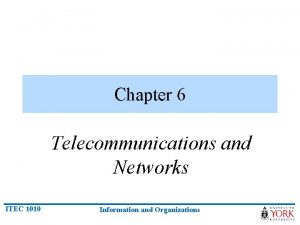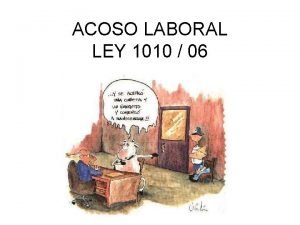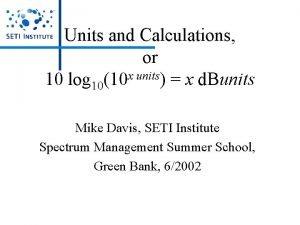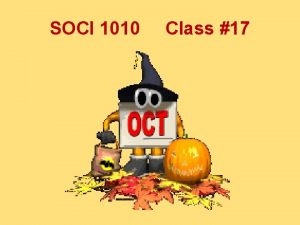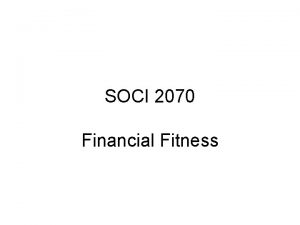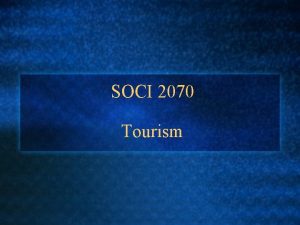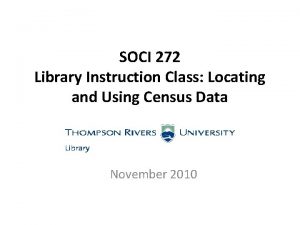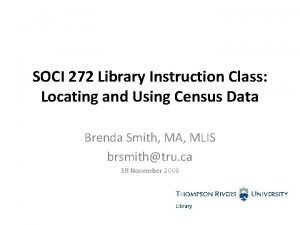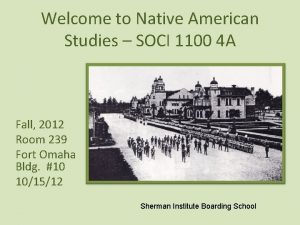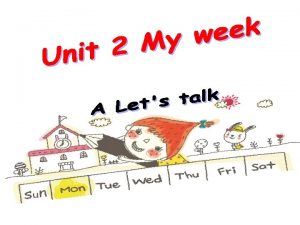Welcome to SOCI 1010 Class 21 1 to






















- Slides: 22

Welcome to SOCI 1010 Class #21 1 to go Metropolitan Community College

Agenda for Class #21 • Roll call game • Population, Urbanization and Ecology

The Study of Population and Urbanization

Demography • The study of the size, composition, growth and distributions of human population • Major variables – Births – Deaths – Movement

Birth Variables • Crude birth rate – number of live births per 1000 population • Fertility Rate – number of children born to women 15 -45 – number of children the average woman bears

Birth, continued • Fecundity – maximum production possible by each woman – number of children women are capable of bearing http: //www. starmoz. com/duggar-family-expecting/

Death Variables • Mortality rates • Crude Death rate – number of deaths per 1000 • Age and Cause specific Death Rates – infant mortality rates – deaths due to cancer or AIDS

Migration: Movement of Population • Net migration rate – difference between number moving in and the number moving out – immigration minus emigration

Internal Migration • Movement from one area to another within the country or state

“Essay on the Principle of Population” by Thomas Malthus, 1798 • Food supply increases at a linear rate (arithmetic) – 1, 2, 3, 4, 5 etc. • population increases exponentially (geometrically) – 2, 4, 8, 16, 32 etc.

• If population growth continues unchecked, then population will outstrip the food supply – positive checks – preventative checks • Neo-Malthusians – doubling time shortens with each generation – 6 billion reached 10/12/99

• Does the world produce enough food for everyone? • http: //www. thehungersite. com/cgibin/Web. Objects/CTDSites • How do we deal with the imbalance between supply and demand? • Describe current and future distribution issues.

Issues Affecting Food Supply • Types of crops • Water supply • Fertilization • Land usage • Hybridization of seeds • Political issues • Getting the food to the people who need it • Enabling the people to produce what they need

Issues Affecting Population Growth • Importance of parenthood • Status is earned by producing children for the community – exaltation of motherhood – machismo - number of children are a sign of virility

Population Growth, continued • Community is generally pronatal • Children are one’s social security • Ecological issues -- what to do with the “trash”? Where will the resources come from?

Urbanization Part 2

Lifestyle Changes When farming production led to surplus, some people were able to spend time in other pursuits …gathering in cities to do so.

Urbanization • Masses of people moving to cities and a growing urban influence on society • Worldwide process • Largely a result of the Industrial Revolution

Advantages of Urbanization • Incredible variety of services, activities and attractions • Anonymity • Opportunities for work

Gentrification • Movement of upper and middle class persons into the run-down inner city area – + Restoration and improvement – - Displacement and homelessness

Invasion and Succession • Dynamic competition of urban life • One group or activity moves into an area and the current residents move out to invade another area • Cycle is never complete

Social Change Processes • Invention • Discovery • Diffusion
 Nab��dka pr��ce soci��ln�� pracovn��k
Nab��dka pr��ce soci��ln�� pracovn��k Ponuka pr��ce soci��lny pracovn��k
Ponuka pr��ce soci��lny pracovn��k Wise men three clever are we
Wise men three clever are we Tekst geef vrede heer geef vrede
Tekst geef vrede heer geef vrede Steal kill and destroy nkjv
Steal kill and destroy nkjv Fischione 1010 ion mill
Fischione 1010 ion mill Ghy 1010
Ghy 1010 Samantha winslow
Samantha winslow Ast 1010
Ast 1010 Ast1010 eksamen
Ast1010 eksamen Braun multimix 1 hm 1010
Braun multimix 1 hm 1010 Eesc 1010
Eesc 1010 Ecor 1010
Ecor 1010 011 101 110
011 101 110 English 1010 slcc
English 1010 slcc To remember a list of the school supplies she needs
To remember a list of the school supplies she needs Saan matatagpuan ang ghana
Saan matatagpuan ang ghana Itec 1010
Itec 1010 Qué es persecución
Qué es persecución 10log10
10log10 Weizmann
Weizmann Fleischmarkt 1 1010 wien
Fleischmarkt 1 1010 wien Explorer post 1010
Explorer post 1010








